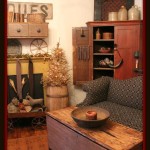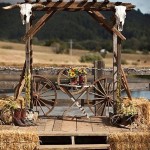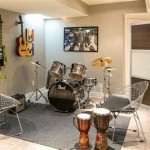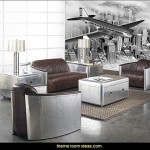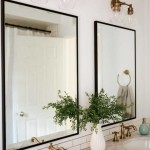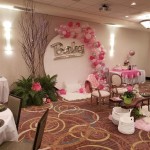Beautiful Home Decor Wall Hanging Ideas: DIY Crafts
Wall hangings serve as a versatile and expressive element in interior design, capable of transforming a bare wall into a captivating focal point. These decorative accents offer a dynamic means to inject personality, texture, and visual interest into any living space. The realm of DIY wall hangings presents an opportunity for homeowners to craft unique pieces that reflect their individual style and complement their existing décor. This exploration will delve into a diverse array of DIY wall hanging ideas, encompassing various materials, techniques, and aesthetic approaches, suitable for crafting impactful and personalized wall decor.
Macramé Wall Hangings: Knotting Art into Decor
Macramé, an ancient textile art form involving knotting cords to create decorative patterns, provides a textural and visually appealing option for wall hangings. The versatility of macramé allows for the creation of a wide range of designs, from simple geometric patterns to intricate, flowing compositions. The primary material for macramé is cord, typically made of cotton, hemp, or jute. Choosing the cord’s thickness and texture directly impacts the final appearance of the piece. Thicker cords create a bolder, more rustic aesthetic, while thinner cords lend themselves to finer, more delicate designs.
Essential tools for macramé include a mounting rod or dowel upon which to begin the knotting process, scissors for trimming excess cord, and a level to ensure that the design remains even during construction. Learning basic macramé knots, such as the square knot, lark’s head knot, and double half hitch knot, is fundamental to creating more complex patterns. Numerous online tutorials and resources offer step-by-step instructions for mastering these essential knots. The design possibilities for macramé wall hangings are virtually limitless. Incorporating beads, feathers, or dyed cords can add further visual interest and personalization. Macramé wall hangings are particularly well-suited for bohemian, coastal, or Scandinavian-inspired interiors, adding a touch of natural texture and artisanal charm.
Woven Tapestries: Weaving Texture and Color
Weaving, another ancient textile art form, involves interlacing warp (vertical) and weft (horizontal) threads to create a fabric. Woven tapestries offer a rich and diverse avenue for creating visually stunning wall hangings. The materials used in weaving can range from traditional wool yarns to unconventional elements such as fabric scraps, ribbons, and even dried plants, allowing for a high degree of creative experimentation.
A loom is the primary tool used in weaving, providing a frame upon which the warp threads are stretched. Smaller frame looms are well-suited for creating smaller wall hangings, while larger floor looms allow for the production of more expansive pieces. Alternative techniques, such as using a branch as a natural loom or employing a simple cardboard loom, can be explored for more accessible and budget-friendly options. The color palette of the yarns used in weaving significantly influences the overall aesthetic of the tapestry. Neutral tones create a calming and sophisticated feel, while bold, contrasting colors add vibrancy and visual impact.
Different weaving techniques, such as plain weave, twill weave, and rya knotting, can be employed to create a variety of textures and patterns within the tapestry. Incorporating elements such as fringe, tassels, or three-dimensional embellishments can further enhance the visual interest of the piece. Woven tapestries can complement a wide range of interior styles, from modern minimalist to eclectic bohemian, adding a touch of handmade artistry and textural depth.
Botanical Wall Art: Preserving Nature's Beauty
Bringing elements of nature indoors through botanical wall art provides a refreshing and organic touch to home décor. This approach can encompass a variety of techniques, from pressing and framing flowers to creating dried plant arrangements. Botanical wall art offers a natural and sustainable means to add color, texture, and visual interest to any room. Pressing flowers and leaves is a straightforward method for creating preserved botanical specimens. Freshly picked flowers are placed between sheets of absorbent paper, such as newspaper or blotting paper, and then weighted down with heavy books.
After several weeks, the flowers will be fully dried and flattened, ready to be framed or incorporated into other decorative projects. Experimenting with different types of flowers and leaves allows for the creation of diverse and visually interesting compositions. Framing pressed flowers in glass frames or shadow boxes protects them from dust and damage while showcasing their delicate beauty. Dried plant arrangements offer another means to incorporate botanical elements into wall décor. Branches, seed pods, grasses, and dried flowers can be arranged in vases or mounted onto wooden boards to create visually striking displays.
Consider using natural materials such as twine, raffia, or burlap to secure the plants, enhancing the organic aesthetic. Preserving plants with glycerin can extend their lifespan and maintain their suppleness. This involves soaking the plant stems in a solution of glycerin and water, allowing the plant to absorb the mixture and retain its moisture. Botanical wall art is particularly well-suited for naturalistic, farmhouse, or cottage-inspired interiors, adding a touch of outdoor serenity to the living space.
Painted Canvas Art: Expressing Artistic Vision
Creating painted canvas art provides a versatile and expressive medium for personalizing wall décor. The possibilities are virtually limitless, ranging from abstract compositions to representational landscapes. The choice of colors, textures, and techniques allows for a highly individualistic expression of artistic vision. Acrylic paints are a popular choice for canvas art due to their quick-drying nature, versatility, and wide range of colors. Oil paints offer a richer, more luminous finish, but require a longer drying time.
Watercolors can be used for creating delicate and translucent effects, while mixed media techniques, incorporating elements such as collage or texture paste, can add depth and dimension to the artwork. Preparing the canvas with gesso, a primer that creates a smooth and uniform surface, is essential for ensuring that the paint adheres properly and the colors remain vibrant. Experimenting with different brushstrokes, layering techniques, and color combinations can lead to unique and visually compelling results.
Abstract art allows for complete freedom of expression, focusing on color, form, and composition rather than representational imagery. Geometric patterns, fluid brushstrokes, and textured surfaces can all contribute to a dynamic and engaging abstract artwork. Representational art involves depicting recognizable objects or scenes, such as landscapes, portraits, or still lifes. Developing a basic understanding of perspective, color theory, and anatomy can enhance the realism and accuracy of representational paintings. Painted canvas art can be tailored to complement any interior style, from modern minimalist to traditional classic, adding a personal and artistic touch to the living space.
String Art: Geometric Patterns with Thread
String art is a visually engaging and accessible craft that involves creating geometric patterns by wrapping string or thread around nails hammered into a wooden board. This technique allows for the creation of intricate and three-dimensional designs. The materials required for string art are relatively simple: a wooden board, nails, string or thread, and a hammer. Choosing a suitable wooden board is important; plywood or solid wood work well, providing a stable surface for hammering the nails. The nails should be small and have a large enough head to prevent the string from slipping off.
Embroidery floss, yarn, or even metallic thread can be used for the string component, depending on the desired aesthetic. Planning the design beforehand is crucial for achieving a well-executed string art piece. This can involve sketching the design onto the wooden board or using a template. Hammering the nails evenly spaced along the outlines of the design creates the framework for the string pattern. Wrapping the string around the nails in a systematic and consistent manner creates the geometric pattern. Different wrapping techniques, such as creating straight lines, zigzags, or curves, can be employed to achieve a variety of visual effects.
Layering the string in different colors can add depth and dimension to the design. String art is particularly well-suited for creating geometric shapes, letters, or abstract patterns. It can also be used to depict more complex images, such as animals or landscapes, with careful planning and execution. String art adds a touch of modern geometric flair to any room, working particularly well in contemporary or minimalist interiors.
Driftwood Art: Coastal Charm from the Sea
Driftwood, weathered pieces of wood that have been washed ashore by the sea, rivers, or lakes, offers a unique and sustainable material for creating rustic and coastal-inspired wall hangings. The natural textures and organic shapes of driftwood create a visually appealing and environmentally friendly form of art. Collecting driftwood involves searching along shorelines for suitable pieces. Look for pieces that are smooth, weathered, and free from sharp edges or splinters. Cleaning the driftwood thoroughly with soap and water is essential to remove any dirt, sand, or salt deposits.
Allowing the driftwood to dry completely before using it in any projects prevents warping or cracking. Arranging the driftwood pieces in a visually pleasing composition is the first step in creating a driftwood wall hanging. This can involve arranging the pieces in a linear pattern, a circular design, or a more abstract arrangement. Gluing the driftwood pieces together using a strong adhesive, such as epoxy or wood glue, creates a stable and durable structure. Attaching a hanging mechanism, such as wire or rope, to the back of the driftwood arrangement allows for easy mounting on the wall.
Driftwood can also be incorporated into other types of wall hangings, such as macramé or woven tapestries, adding a touch of natural texture and coastal charm. Decorating the driftwood with paint, shells, or other embellishments can further personalize the design. Driftwood art is particularly well-suited for coastal, nautical, or bohemian-inspired interiors, adding a touch of natural beauty and rustic elegance to the living space.
DIY Photo Wall Hanging: personalizing Spaces With Memories
Photo wall hangings offer an opportunity to showcase cherished memories in a creative and personalized way. These types of wall decorations can range from simple arrangements of framed photos to more intricate displays using clips, string lights, or other decorative elements. Selecting high-quality prints of favorite photographs is the first step in creating a photo wall hanging. Consider using a variety of sizes and formats, such as square prints, panoramic prints, or black and white prints, to create visual interest.
Choosing frames that complement the photographs and the overall décor of the room is important. Matching frames create a cohesive and polished look, while mismatched frames add a touch of eclecticism and personality. Arranging the photos on the wall in a visually pleasing manner is crucial for creating a balanced and harmonious display. Consider using a grid layout for a symmetrical and organized look, or a more freeform arrangement for a more casual and relaxed feel. Using templates or paper cutouts to plan the layout before hanging the photos can help ensure a visually appealing result.
Alternative methods for displaying photos include using clips and string to create a photo garland, or attaching photos to a wire grid or corkboard. Incorporating string lights or fairy lights can add a warm and inviting glow to the photo wall hanging. Adding decorative elements such as pressed flowers, postcards, or ticket stubs can further personalize the display and tell a story. Photo wall hangings are a versatile and meaningful way to personalize any room, showcasing cherished memories and adding a personal touch to the living space.

8 Beautiful Home Decor Wall Hanging Ideas Diy Craft Crafts Handmade Hangings

3 Beautiful Wall Hanging Craft Ideas Diy Decor Home Decorating Paper Creative Art Crafts

3 Quick And Easy Wall Hanging Ideas Flower Home Decor Diy How To Make Simple Paper Craft

Home Decorating Ideas Wall Decoration Diy Room Decor Hanging Craft Idea Creativeart Crafts Paper Art

Easy And Beautiful Wall Hanging Home Decoration Idea Paper Flower Diy Craft In 2025 Crafts Decor

Easy And Quick Paper Wall Hanging Ideas How To Make Simple Craft Room Decor Diy

17 Best Diy Wall Decor Ideas In 2025 Art

Beautiful Wall Hanging Unique Craft Ideas Diy Home Decoration Crafts Paper Art Handmade Hangings

3 Quick And Easy Wall Hanging Ideas Flower Home Decor Diy How To Make Simple Paper Craft

40 Amazing Craft Wall Hanging Ideas Design Improvised
Related Posts

